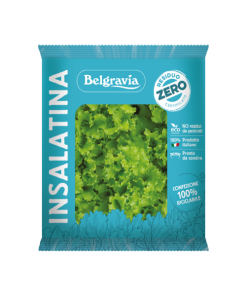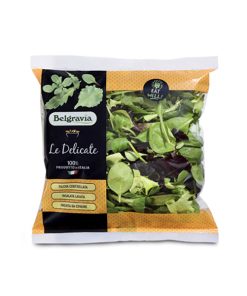MIX SALAD BABY LEAF CERTIFIED “RESIDUO ZERO”,
A SUSTAINABLE AND SAFE LINE
Our baby leaf certified “Residuo Zero” are guaranteed without pesticide residues, thanks to a virtuous and low environmental impact production cycle.
We cultivate with strict control of the supply chain from the sowing to the harvest and packaging. We bring safe, healthy and high quality salads to our tables.
Our MIX SALAD BABY LEAFS are the first in Europe to be certified “Residuo Zero”.
A recognition of which we are enormously proud.
Belgravia is the first European company to bring to the table the new line
BABY LEAF CERTIFIED “RESIDUO ZERO”,
with NO pesticide residue.
The virtuous “zero residue” certificate is the result of an excellent work that involved all company functions for over 5 years.
“WHAT DOES “ZERO RESIDUE” MEAN?
A baby leaf mix salad product is certified “Zero Residue” solely and exclusively when the phytosanitary residues of chemical synthesis are lower than or equal to 0.01 mg/kg (10 ppb) at harvest time.
“Zero Residue” is the evolution of “integrated pest management”: it adds further limitations on the use of agrochemicals to the already restrictive parameters laid down by the regulations for this type of product.
THE “RESIDUO ZERO” CERTIFICATION WAS
POSSIBLE THANKS TO THE INTRODUCTION OF DIFFERENT
AND INNOVATIVE AGRONOMIC TECHNIQUES.
Evolution in tillage:
reduction of leaf rot;
greater water savings.
Use of organic fertilizers from certified farms:
restoration of the chemical-physical structure of the soil;
greater supply of nutrients to the soil, with plants that are healthier and more resistant to climatic, environmental and disease stress;
reduction of the use of chemicals on land;
less environmental impact.
Research of molecules with high degradability and zero environmental impact.
Evaluation of the decay time of the molecules.
Assessment of risk factors for drifts.
BREAKTHROUGH DIGITAL CONTROL OF GREENHOUSES.
The greenhouses are technologically monitored, in real time, through special probes that measure the temperature and humidity of the air and soil, solar radiation, the dew point. The data from these probes are able to communicate and feed big data and machine learning systems, allowing the timely interpretation and analysis of the climatic conditions and the state of health of the plant, leading to the optimization of the use of irrigation and phytosanitary treatments. Thus, we are able to develop predictive analyzes that allow us to intervene efficiently and effectively on cultivation.


















